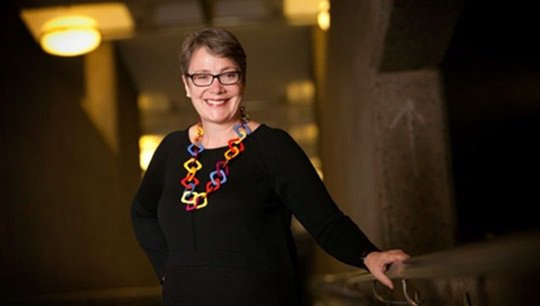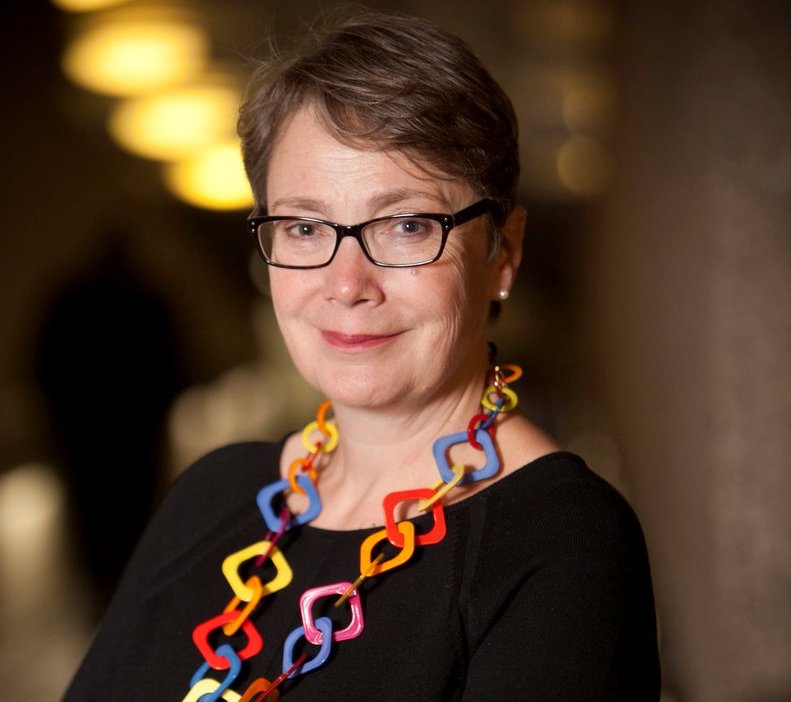
In the first of a series of interviews with leading lights in UK creative industries, we speak to Louise Jeffreys, the Director of Arts at the Barbican who has a long history in theatre and opera.
The Barbican Centre is a performing arts centre in London and the largest of its kind in Europe. Louise, who is responsible for the centre’s artistic programme and strategic vision was particularly impressed by the scale and vision of Colombia’s cultural industry.
Louise was one of a 12-person delegation of experts from the UK who came to participate in a four day event organised by the British Council.
During their trip, which comes under the ‘Creative Future’ programme, the group participated in a discussion entitled ‘The ABC of the Creative Economy’ and visited the Bronx Creative District, the new Cinemateca de Bogotá and the Teatro Mayor Julio Mario Santo Domingo.
Louise told us a bit more about her experiences here.
The Bogotá Post: What has stood out the most for you during your visit to Colombia? Any particularly inspiring initiatives? Can you tell us more about what you’ve seen and done here?
Louise Jeffreys: The willingness of The Ministry of Foreign Affairs to give so much time to us was really impressive. This session at the Ministry set the scene and enabled us to hear from many influential people including Adriana Mejía Hernández, David Melo and Felipe Buitrago, which gave us a basic understanding of the Orange Economy and set the scene for the rest of the trip.
I very much enjoyed visiting the Teatro Mayor which has much in common with the Barbican in terms of its breadth of programming and vision. Ramiro Osorio and his team were very generous in giving their time to show us round and explain their interesting business model.
TBP: As Colombia invests more into creative industries and the ‘Orange Economy’, what impact do you see this having in the near future for the country?
LJ: Four days is not enough time to fully understand the implications of this policy. However, I do believe in the power of the creative industries to generate economic growth, improve productivity and generate employment – especially in areas where digital innovation and creativity meet. The creative industries also help a country to express its individuality and character on the international scene.
TBP: I know the Barbican is very focused on international collaboration especially with trying to bring talent to the UK. Why is this so important and what impact does it have on the productions?
LJ: Whether working locally, nationally or internationally artists help us to understand ourselves and the world we live in, they open us to new horizons and help us and to hear other points of view. International collaboration gives artists the opportunity to be inspired by new relationships, and it brings new and vibrant work to a wider range of audiences. Apart from this, London is one of the most diverse cities in the world and there is a huge appetite for international programmes. On a more practical level, touring also helps to make some projects more affordable.
TBP: What advice do you have for women looking to go into the arts world? What changes have you seen for women in the last few years, and where do you think we are heading?
LJ: My advice is to always be yourself, call out unacceptable behaviour and support other women – and encourage men to be feminists too – and never offer to pour the coffee in meetings! Things are changing – the #MeToo movement has helped draw attention to harassment in the workplace and I notice that younger women are getting far less tolerant of ongoing inequalities. We are heading towards gender equality and closing the gender pay gap – I have to believe that!
Related: Creative industries in Colombia, turning creativity into cash
TBP: What can some of the projects you have seen here learn from what the Barbican does?
LJ: Recently we have tried to see the Barbican as more of an all day destination by commissioning work by emerging artists for our foyers, by encouraging people to work there using our free WiFi, by convening free talks and debates on contemporary subjects and by providing a better environment for people to come to, even if they don’t plan to come to a performance. We see our foyers as public space for everyone. I don’t know if this is happening in arts spaces in Colombia, but it has helped us to diversify our audience and engage more people.
TBP: What can the Barbican learn from projects in Bogotá?
LJ: Think big! The Bronx project and the newly opened Cinemateca are hugely ambitious ideas.
TBP: Are there any people you’ve come across here that particularly jumped out at you- and why?
LJ: The Doris Salcedo anti-monument was the stand out experience for me. The art work itself had a somber beauty which was only enhanced by the participation of victims of violence in making it and the materials (37 tonnes of melted FARC weapons) from which it was made. Art of the highest quality as history and as witness.
TBP: What is your overall impression of the arts scene in Bogotá after your short visit? Has it differed at all from your expectations?
LJ: My first visit to Bogota was in 2014 when I came to the international theatre and dance festival, the Festival Iberoamericano de Teatro. The scale and ambition of the festival was remarkable – and that scale of ambition remains in the projects that I saw on this visit. This is underpinned by a commitment to the cultural industries at the heart of government that must be virtually unique in the world. What an opportunity to show the world that culture really does change lives.





